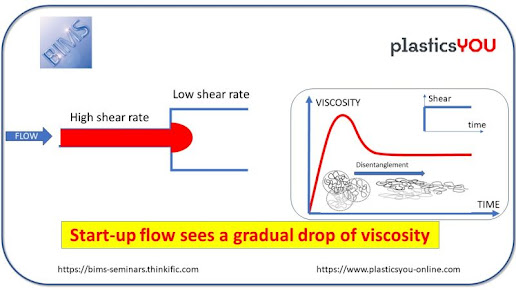DSM Showcased Dyneema® Force Multiplier Tech.-based Vehicle Armor Solutions at Eurosatory
At Eurosatory 2014, DSM Dyneema, the manufacturer of ultra-high molecular weight polyethylene (UHMwPE) fiber, branded as Dyneema®, and among the world leader in life protection materials and high-performance fibers, showcased innovative vehicle armor solutions based on its industry-leading Dyneema® Force Multiplier Technology. Aerospace and naval armor solutions from TenCate Advanced Armour and Rheinmetall Ballistic Protection GmbH, respectively, leverage this radical breakthrough in protection to address three major trends for light tactical interdiction vehicles: new operating environments, increasing weight from electronics and extended fuel supply chains. Dyneema® Force Multiplier Technology platform delivers exceptional ballistic performance and the lightest weight and lowest profile for enhanced protection.
"We are spotlighting two major vehicle protection applications to showcase the extreme performance and multiple benefits of Dyneema® Force Multiplier Technology," said Shitij Chabba, Global Business Segment Director, DSM Dyneema. "These game changing aerospace and naval solutions from two industry leaders epitomize the value of our revolutionary technology platform for vehicle armor and build on our success in personal protection applications. Our ongoing collaboration with both TenCate and Rheinmetall demonstrates the disruptive power of Dyneema® Force Multiplier Technology to drive the evolution of leading-edge ballistic protection."
Both TenCate and Rheinmetall selected Dyneema® Force Multiplier Technology to help strengthen their competitiveness in the fast-changing operating environments of light tactical vehicles for military, law enforcement and homeland security operations. In general, asymmetrical, unconventional warfare, low-intensity conflicts and homeland security needs have dramatically altered the traditional missions of smaller vehicles requiring enhanced light weight armor protection. Finally, they help meet the need for better fuel efficiency, which can reduce operating costs, expand vehicle range and enhance sustainability.
In contrast to vehicle armor made from traditional materials such as ceramics, glass, and aramid that can negatively impact speed, agility, range and payload capacity, solutions engineered with Dyneema® Force Multiplier Technology can reduce weight by up to 25 percent.
Built on DSM Dyneema's Radical Innovation Platform, this technology combines breakthroughs in polymer science, next-generation UHMwPE fiber technology and unique uni-directional engineering.
Two Innovative Companies Change the Game in Aerospace Armor:
"We are very proud of our new helicopter armor solution made possible by DSM Dyneema's technology, expertise and support," said Steen Tanderup, Managing Director, TenCate. "The exceptional armor technology and low weight of Dyneema® Force Multiplier Technology made it an obvious candidate as we set out to develop our solution. We know our customers in the aerospace sector will be very satisfied with the results."
Close Collaboration Brings Innovation to Naval Sector:
"Rheinmetall is known for innovative, high-quality naval solutions — a reputation that stems from creating consistently superior products," said Onno't Hart, Managing Director, Rheinmetall Ballistic Protection. "We are able to achieve this quality by selecting only top suppliers as collaboration partners, companies that bring their own valued solutions. With DSM Dyneema's advanced technology and expertise, we were able to pioneer a uniquely lightweight armor solution for our new anti-piracy protection solutions that does not compromise on protection."
Dyneema® and Dyneema®, the world's strongest fiber™ are trademarks of DSM. Use of these trademarks is prohibited unless strictly authorized.
All other trademarks are the property of their respective owners.
Source: DSM
"We are spotlighting two major vehicle protection applications to showcase the extreme performance and multiple benefits of Dyneema® Force Multiplier Technology," said Shitij Chabba, Global Business Segment Director, DSM Dyneema. "These game changing aerospace and naval solutions from two industry leaders epitomize the value of our revolutionary technology platform for vehicle armor and build on our success in personal protection applications. Our ongoing collaboration with both TenCate and Rheinmetall demonstrates the disruptive power of Dyneema® Force Multiplier Technology to drive the evolution of leading-edge ballistic protection."
Both TenCate and Rheinmetall selected Dyneema® Force Multiplier Technology to help strengthen their competitiveness in the fast-changing operating environments of light tactical vehicles for military, law enforcement and homeland security operations. In general, asymmetrical, unconventional warfare, low-intensity conflicts and homeland security needs have dramatically altered the traditional missions of smaller vehicles requiring enhanced light weight armor protection. Finally, they help meet the need for better fuel efficiency, which can reduce operating costs, expand vehicle range and enhance sustainability.
In contrast to vehicle armor made from traditional materials such as ceramics, glass, and aramid that can negatively impact speed, agility, range and payload capacity, solutions engineered with Dyneema® Force Multiplier Technology can reduce weight by up to 25 percent.
Built on DSM Dyneema's Radical Innovation Platform, this technology combines breakthroughs in polymer science, next-generation UHMwPE fiber technology and unique uni-directional engineering.
Two Innovative Companies Change the Game in Aerospace Armor:
"We are very proud of our new helicopter armor solution made possible by DSM Dyneema's technology, expertise and support," said Steen Tanderup, Managing Director, TenCate. "The exceptional armor technology and low weight of Dyneema® Force Multiplier Technology made it an obvious candidate as we set out to develop our solution. We know our customers in the aerospace sector will be very satisfied with the results."
Close Collaboration Brings Innovation to Naval Sector:
"Rheinmetall is known for innovative, high-quality naval solutions — a reputation that stems from creating consistently superior products," said Onno't Hart, Managing Director, Rheinmetall Ballistic Protection. "We are able to achieve this quality by selecting only top suppliers as collaboration partners, companies that bring their own valued solutions. With DSM Dyneema's advanced technology and expertise, we were able to pioneer a uniquely lightweight armor solution for our new anti-piracy protection solutions that does not compromise on protection."
Dyneema® and Dyneema®, the world's strongest fiber™ are trademarks of DSM. Use of these trademarks is prohibited unless strictly authorized.
All other trademarks are the property of their respective owners.
Source: DSM


Comments
Post a Comment